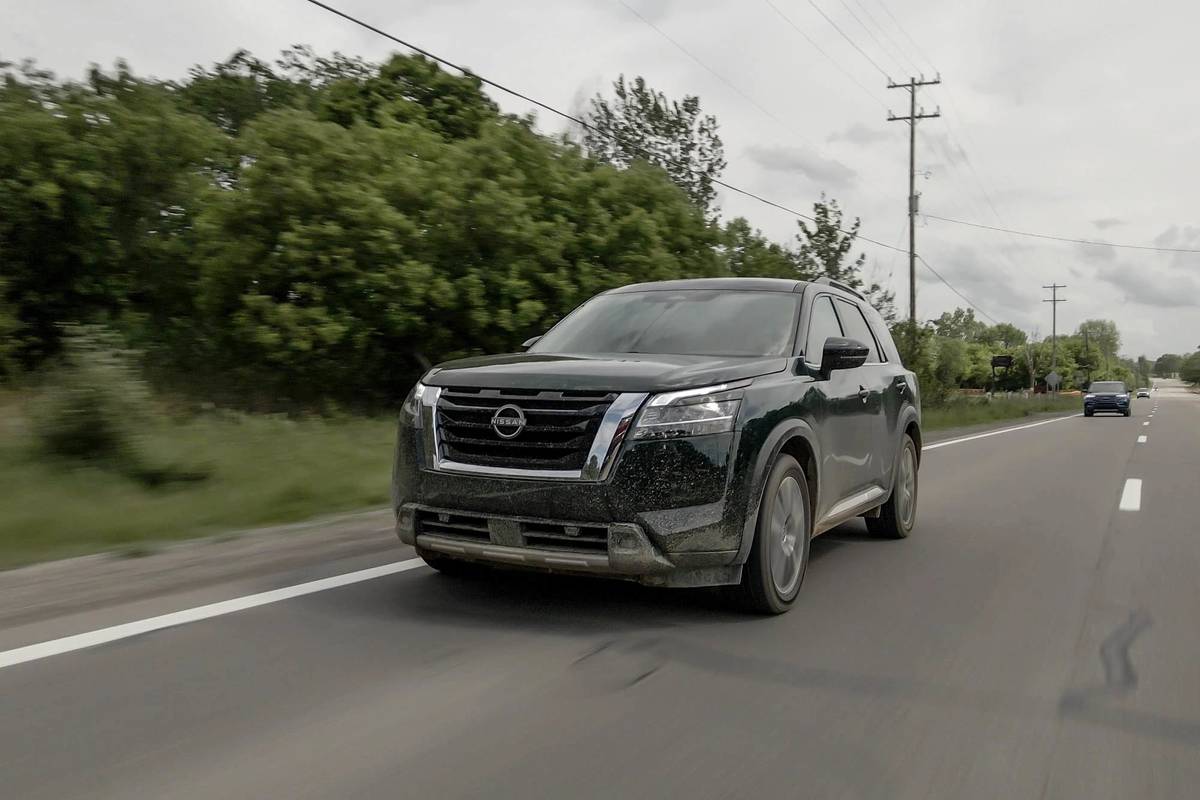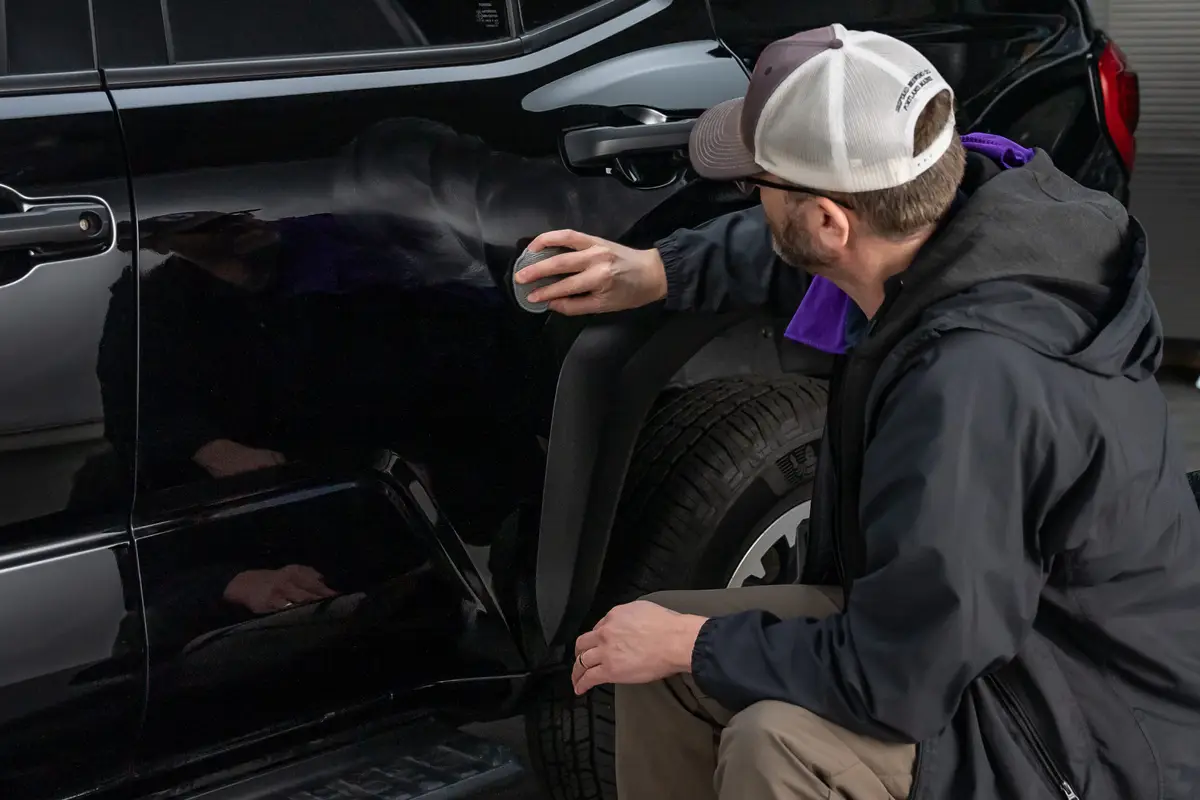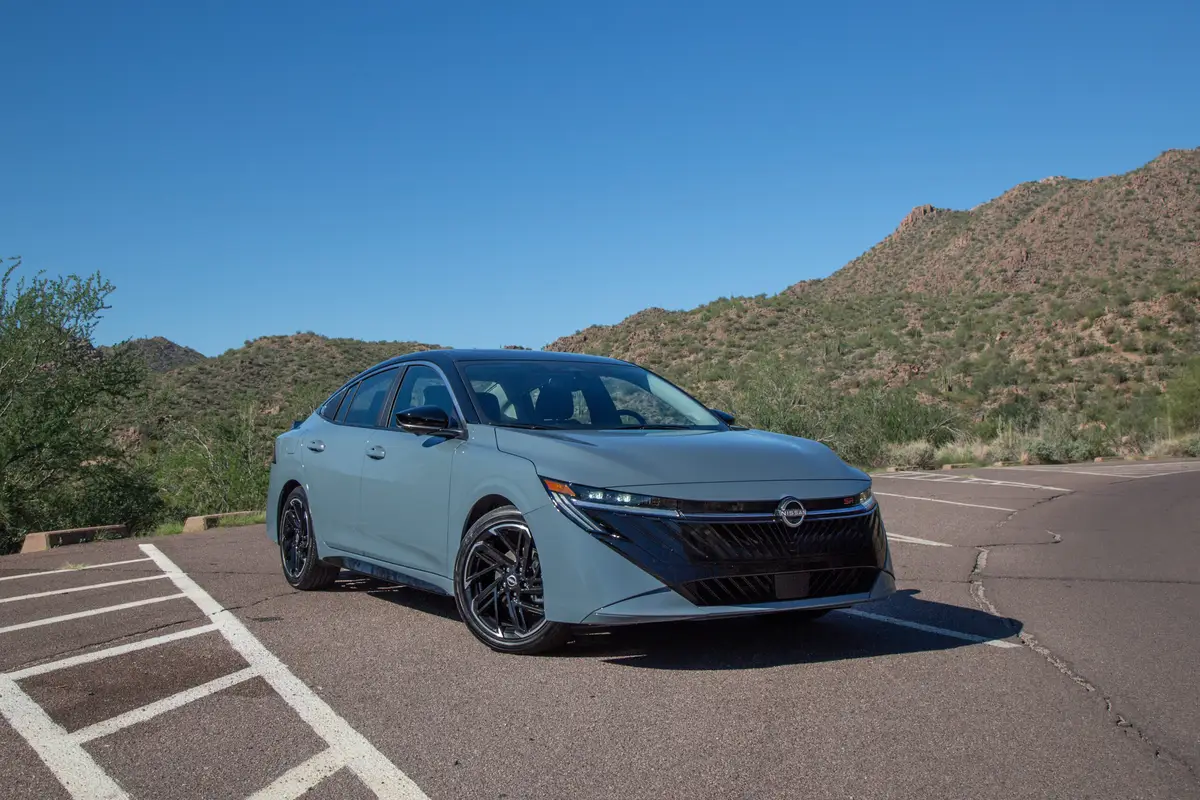How Do Car Seats Fit in a 2022 Nissan Pathfinder?


The verdict: Redesigned for 2022, the Nissan Pathfinder has a rugged-looking exterior, but for families, it’s what’s on the inside that really counts. The Pathfinder’s second row accommodates car seats well, but the third row gave our installer some problems. For this Car Seat Check, we tested the 2022 Pathfinder Platinum with all-wheel drive and captain’s chairs in the second row.
Does it fit three car seats? No.
Take a look at how the Latch system and each car seat scored below in our Car Seat Check of the 2022 Nissan Pathfinder.
Related: Search Car Seat Checks

A Grade
- Latch: The 2022 Pathfinder has two sets of lower Latch anchors in the second-row captain’s chairs and one set of lower anchors in the third row. The anchors are exposed and well marked. Top tether anchors are located on the seatbacks of the second- and third-row seats; they’re all marked with a large Latch symbol, alerting parents and caretakers to use that anchor instead of a cargo anchor (a mistake that happens regularly).
- Infant: This rear-facing car seat fit well, and there was no need to move the front passenger seat forward to accommodate the infant seat behind it. Installation was a snap thanks to the exposed lower Latch anchors.
- Rear-facing convertible: This rear-facing car seat also installed easily and didn’t impact the front passenger’s legroom.
- Forward-facing convertible: In forward-facing mode, this car seat fit well in the second-row captain’s chair, and we installed it without issue. Caretakers should note that the Pathfinder’s owner’s manual recommends removing the head restraints before installing the car seat.
- Third-row access: A one-touch button, which folds and slides the captain’s chairs forward, is located on the side of the chair base. There’s another button on the seatback that makes for easy access for third-row passengers. A small cutout for your feet makes getting into the third row easy-breezy.
B Grade
- Booster: In the second row, the wide captain’s chairs made installing our high-back booster seat a snap, but the seat belt buckle sits nearly flush with the bottom seat cushion, making buckling up a challenge for younger kids.
C Grade
- Third-row forward-facing convertible: The third-row seats have large head restraints that fold down when the seats are stowed, but are not otherwise adjustable. The head restraints pushed the car seat forward so only the top of the car seat rested on the head restraint, but not on the seatback; for a proper install, the car seat should fit flush against the seatback cushion. Because the head restraint pushed the car seat forward, about 20% of the car seat base hangs off the bottom seat cushion, which is just at the limit of what’s acceptable. According to the owner’s manual, the convertible seat’s tether strap should be routed on the inside of the outboard head restraints. For the third row’s middle seat, the tether strap can be routed over the head restraint.
- Third-row booster: The large head restraint pushed the booster seat’s back forward slightly. The seat belt buckle sits in the bottom cushion, making it difficult for younger kids to buckle up independently.
Grading Scale
A: Plenty of room for the car seat and the child; doesn’t impact driver or front-passenger legroom. Easy to find and connect to Latch and tether anchors. No fit issues involving head restraint or seat contouring. Easy access to the third row.
B: One room, fit or connection issue. Some problems accessing the third row when available.
C: Marginal room plus one fit or connection issue. Difficult to access the third row when available.
D: Insufficient room, plus multiple fit or connection issues.
F: Does not fit or is unsafe.
About Cars.com’s Car Seat Checks
Editors Jennifer Geiger and Jennifer Newman are certified child safety seat installation technicians.
For the Car Seat Check, we use a Chicco KeyFit 30 infant-safety seat, a Graco Contender 65 convertible seat and Graco TurboBooster seat. The front seats are adjusted for a 6-foot driver and a shorter passenger. The three child seats are installed in the second row. The booster seat sits behind the driver’s seat, and the infant and convertible seats are installed behind the front passenger seat.
We also install the forward-facing convertible in the second row’s middle seat with the booster and infant seat in the outboard seats to see if three car seats will fit; a child sitting in the booster seat must be able to reach the seat belt buckle. If there’s a third row, we install the booster seat and a forward-facing convertible. Learn more about how we conduct our Car Seat Checks.
Parents should also remember that they can use the Latch system or a seat belt to install a car seat, and that Latch anchors have a weight limit of 65 pounds, including the weight of the child and the weight of the seat itself.
Cars.com’s Editorial department is your source for automotive news and reviews. In line with Cars.com’s long-standing ethics policy, editors and reviewers don’t accept gifts or free trips from automakers. The Editorial department is independent of Cars.com’s advertising, sales and sponsored content departments.

Editor-in-Chief Jennifer Newman is a journalist with more than 25 years of experience, including 15 years as an automotive journalist at Cars.com. Jennifer leads the Editorial team in its mission of helping car shoppers find the vehicle that best fits their life. A mom of two, she’s graduated from kids in car seats to teens behind the steering wheel. She’s also a certified car-seat technician with more than 12 years of experience, as well as member of the World Car Jury, Automotive Press Association and Midwest Automotive Media Association. LinkedIn: https://www.linkedin.com/in/jennilnewman/ Instagram: @jennilnewman
Featured stories




2026 Nissan Sentra Review: Long Live the Sedan

